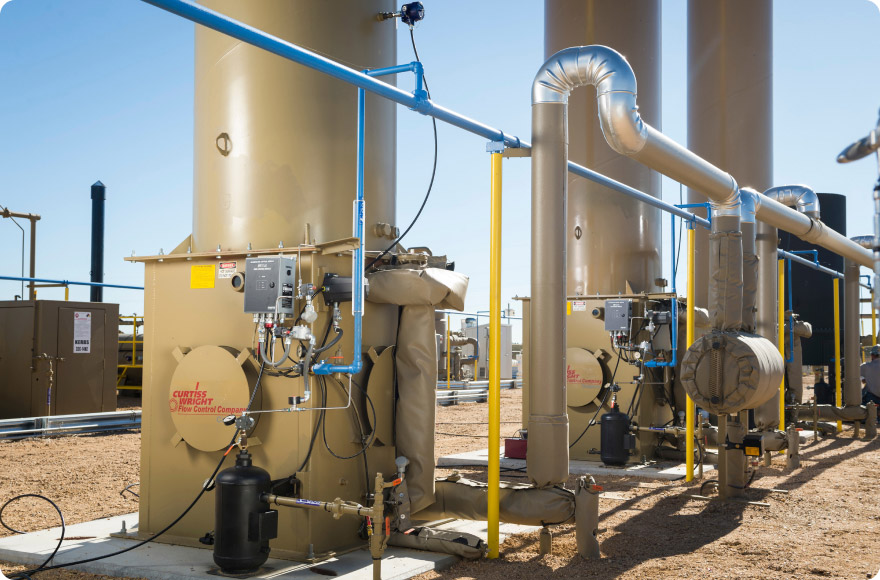The main objective of industrial burner operators is to keep operations safe, efficient, and cost-effective while abiding by all relevant environmental regulations. One way to achieve these goals is to ensure that the proportion of fuel and air that is mixed in the combustion process of the heaters is optimum.
There is a sweet spot with respect to the fuel-air ratio that reaps the best benefits when it comes to combustion. In technical parlance, this theoretically ideal ratio is called the stoichiometric ratio. Basically, it is when there is just enough air to burn all the available fuel.
Having less air means that there will be incomplete combustion, i.e. less oxygen for the combustion chemical reaction. This means that there will be excess unburnt fuel left over. The lack of oxygen also results in carbon monoxide and other noxious gases which are released into the atmosphere via stacks.
This results in an inefficient burner, as not all fuel is used. The maximum amount of energy is not produced as valuable unburnt fuel gets wasted. Furthermore, the resulting emissions and waste violate environmental regulations set by the EPA (Environmental Protection Agency) and contribute to pollution.
Having too much air has its problems as well. It also wastes fuel, although in a different manner altogether. The excess air leads to additional process load in the heater, which decreases the temperature in the combustion zone as the excess oxygen and nitrogen in the air absorbs the heat, thus the heating process becomes inefficient. The fuel does not produce the maximum amount of heat that it is capable of, and the cost of operation rises. The excess hot air is released through the stacks.
In practical terms, industrial heater operators do not set up their equipment to the ideal stoichiometric fuel-air ratio. They always have a little more air. This is due to several reasons. Not all oxygen in the air might react perfectly with the fuel to undergo the combustion chemical reaction as gases move fast through the combustion zone. Another factor to consider is that some temperature drop due to some excess air is useful, otherwise the sudden high temperatures will lead to a sort of reverse combustion called dissociation. In this reaction, the temperature is so high that carbon dioxide and water vapor that was produced by the initial combustion begins to break down into hydrogen and carbon monoxide. A little excess air reduces dissociation.
Obtaining a balanced fuel-air ratio is a science and art that industrial burner operators need to master in order to meet their objectives. Fortunately, the latest burner management systems often have fuel-air ratio controllers (FARC) built-in.
When setting up the industrial burner, installers test it by running the burner on different firing rates while monitoring the oxygen, unburnt fuel, and other gases which are emitted in the stack. Measuring them in the combustion zone is impossible due to the intense heat there. This initial analysis results in a look-up table. The table contains entries for the desired firing rates as well as the percentage of opening of the air damper installed on the forced air blower, and that of opening of the fuel train valve.
This look-up table is used by the burner management system (BMS) controller which adjusts the amount of opening of the fuel valve and air damper. The amount of oxygen and other gases are monitored continuously in the stacks by the use of sensors. This information is fed back to the BMS controller which in turn adjusts the fuel-air ratio on the fly by tweaking the valve and damper. The valve and damper have sensors in them that also feedback their positions to the BMS. This allows the fuel-air ratio to synchronize with changes in air density caused by fluctuations in wind and atmospheric temperature.
Fuel-air controllers provide the mechanism to automatically achieve the best fuel-air ratio which is so critical in safe, efficient, cost-effective and environmentally compliant operation of industrial process heaters. Profire Energy’s PF3100 BMS has FARC built-in. Their service team can help you achieve your burner operations objectives.
For more information contact us.
